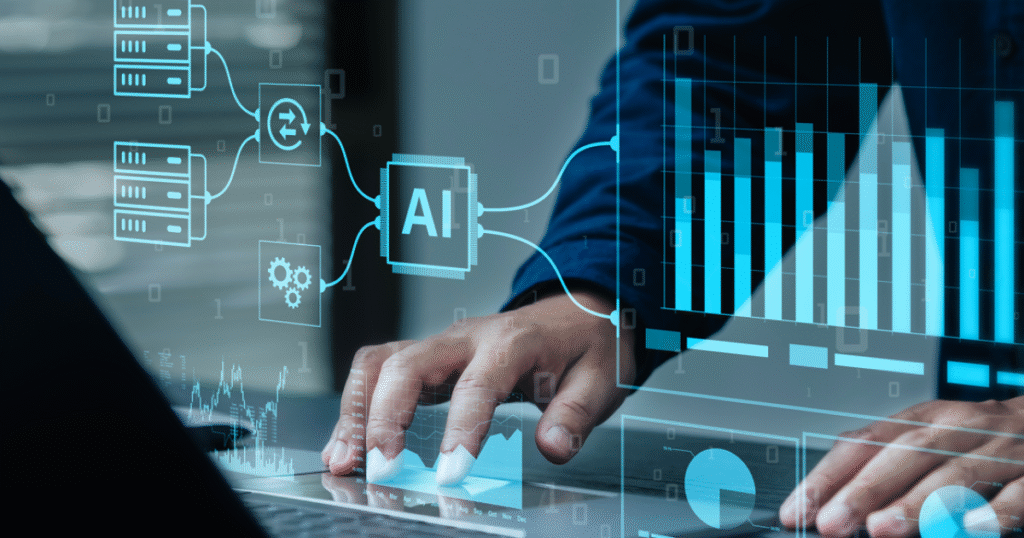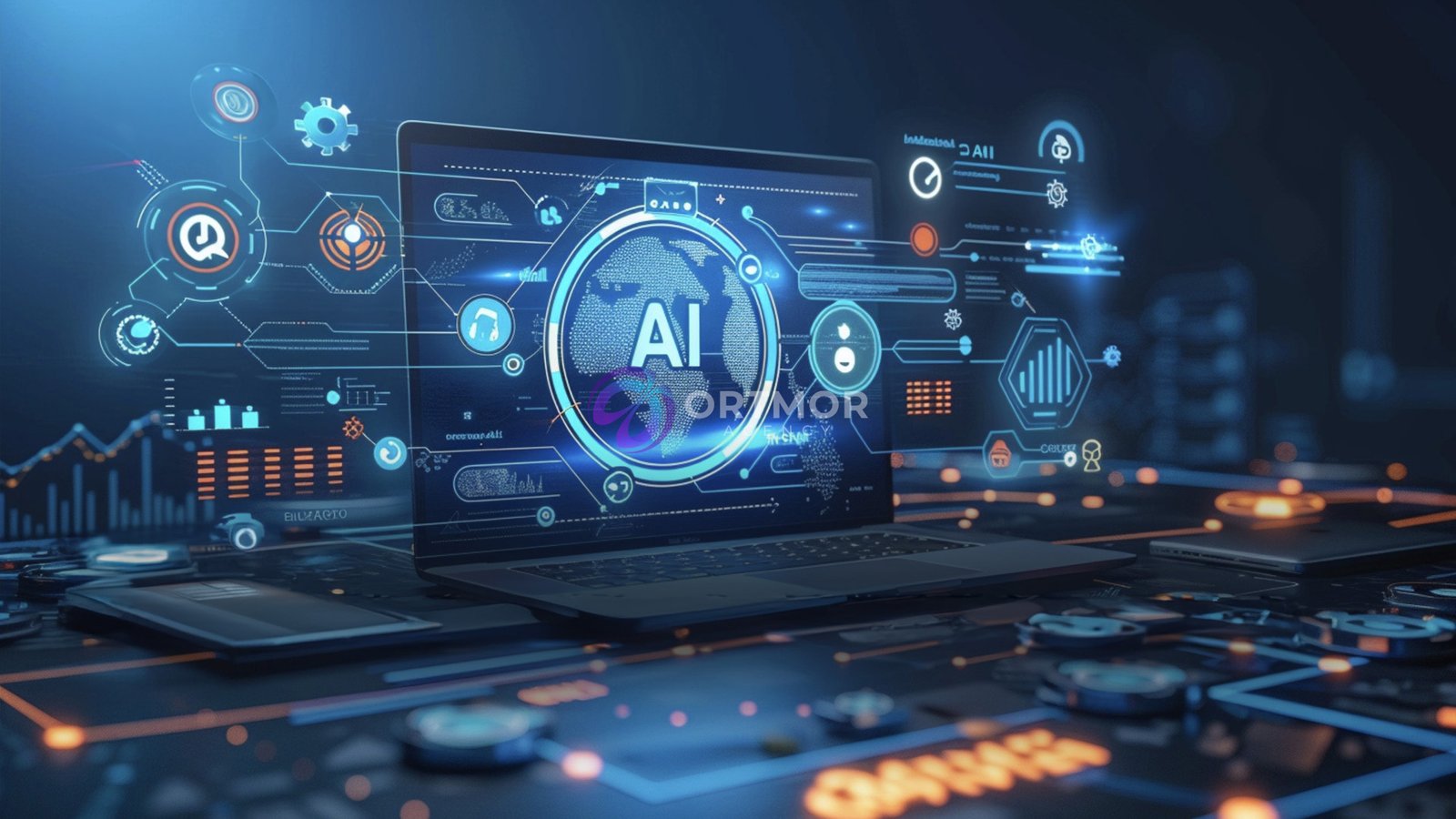Introduction
In the last decade, artificial intelligence (AI) has transitioned from a futuristic concept into a practical necessity. AI tools now power countless industries, transforming how businesses operate, decisions are made, and services are delivered. From language processing systems to data analytics platforms and generative design, AI tools have become critical in enhancing productivity and driving innovation across sectors.
This article explores the diverse landscape of AI tools, highlighting their evolution, current applications, benefits, limitations, and what the future holds.
The Genesis of AI Tools
The development of AI tools can be traced back to foundational work in computer science and mathematics in the 20th century. Early AI systems were rudimentary, rule-based machines focused on logic and symbolic reasoning. These tools were limited in scope and required significant computational resources.
As machine learning and deep learning emerged, the capacity of AI tools expanded rapidly. Cloud computing, vast datasets, and advanced neural networks allowed these tools to move from theoretical constructs to tangible, powerful technologies. Today, AI tools range from simple automation scripts to complex platforms capable of creative thinking, self-learning, and natural human interaction.
Classification of AI Tools
AI tools come in many forms, depending on the task they are designed to handle. Here are some major categories:
1. Natural Language Processing (NLP) Tools
NLP tools allow machines to understand, interpret, and generate human language. These include:
- Chatbots (e.g., OpenAI’s ChatGPT, Google Bard)
- Language translators (e.g., DeepL)
- Grammar checkers (e.g., Grammarly)
- Speech-to-text systems (e.g., Otter.ai)
These tools are used in customer service, education, content creation, and more.
2. Computer Vision Tools
Computer vision tools interpret visual data, such as images or videos. Applications include:
- Facial recognition systems
- Object detection
- Medical imaging diagnostics
- Quality inspection in manufacturing
Tools like Google Cloud Vision and Amazon Rekognition lead in this space.
3. Data Analytics and Predictive Modeling
These tools analyze massive datasets to detect patterns and predict future outcomes. Notable examples include:
- Tableau AI
- Power BI AI visuals
- IBM Watson Studio
Such tools are invaluable in finance, marketing, healthcare, and retail for forecasting trends, customer behavior analysis, and more.
4. Automation and Robotic Process Automation (RPA)
RPA tools use AI to automate repetitive business processes. Platforms such as UiPath, Blue Prism, and Automation Anywhere allow companies to streamline operations, reduce error rates, and cut costs.
5. Generative AI Tools
Generative AI can create text, images, music, and even code. Examples include:
- DALL·E (image generation)
- GitHub Copilot (code generation)
- Suno AI (music creation)
- Runway ML (video editing)
These tools are increasingly used in content creation, marketing, design, and software development.
Use Cases Across Industries
1. Healthcare
AI tools have revolutionized healthcare by improving diagnostic accuracy, patient monitoring, and drug discovery. For example:
- AI-driven radiology tools can detect tumors earlier than human radiologists.
- Wearable devices use AI to monitor vital signs in real time.
- AI models predict disease outbreaks and track pandemic evolution.
2. Finance
In finance, AI tools assist in fraud detection, algorithmic trading, credit scoring, and risk management. AI can analyze vast amounts of transactional data within seconds to flag anomalies or detect patterns indicative of financial crime.
3. Education
Personalized learning platforms like Coursera and Khan Academy use AI to adapt content to individual student needs. AI tools also automate grading and help identify at-risk students through behavioral analytics.
4. Retail
Retailers employ AI for inventory forecasting, customer service chatbots, personalized recommendations, and pricing strategies. Amazon’s recommendation engine and Zara’s demand prediction models are prime examples.
5. Manufacturing
In Industry 4.0, AI tools oversee predictive maintenance, defect detection, supply chain optimization, and robotic automation.
Benefits of AI Tools

The rise of AI tools brings significant advantages:
- Efficiency: Tasks that took hours can now be completed in seconds.
- Accuracy: AI minimizes human error, especially in data-heavy operations.
- Cost Reduction: Automation reduces labor costs and operational overhead.
- Scalability: AI tools enable businesses to scale services rapidly.
- Availability: AI tools operate 24/7 without fatigue, enhancing service delivery.
Challenges and Limitations
Despite their promise, AI tools also come with caveats:
1. Data Dependency
AI tools require vast, high-quality datasets. Inaccurate or biased data can lead to flawed results and perpetuate systemic biases.
2. Lack of Transparency
Many AI models function as “black boxes,” where decision-making logic is not easily interpretable. This raises concerns in critical fields like healthcare and law.
3. Security and Privacy
AI systems often handle sensitive data. If compromised, they can become tools for surveillance, identity theft, or cyberattacks.
4. Job Displacement
Automation threatens many traditional jobs. While AI creates new opportunities, it also demands reskilling on a massive scale.
5. Regulatory Gaps
AI evolves faster than legislation. There is an urgent need for robust regulatory frameworks to govern ethical AI development and deployment.
Popular AI Tools in 2025
Here’s a snapshot of the most widely used AI tools as of mid-2025:
| Tool Name | Function | Use Case Example |
| ChatGPT | Conversational AI | Customer support, content creation |
| MidJourney | Image generation | Graphic design, marketing |
| Notion AI | Productivity & writing | Task automation, summarization |
| Synthesia | AI video creation | Corporate training videos |
| Tableau AI | Data visualization | Business intelligence |
| Jasper AI | Copywriting & marketing | Social media content, ad copy |
| GitHub Copilot | Code generation | Software development |
| Claude AI | Enterprise-focused LLM | Legal, documentation, enterprise NLP |
Open-Source vs. Proprietary AI Tools
While companies like Microsoft and Google dominate proprietary AI offerings, open-source tools remain a critical part of the AI ecosystem. Projects like Hugging Face Transformers, Stable Diffusion, and OpenCV offer developers accessible tools to build custom applications without vendor lock-in.
Open-source tools foster innovation, transparency, and collaboration—essential ingredients in ethical AI development.
AI Tools for Startups and SMBs
AI isn’t just for large enterprises. With SaaS-based solutions and APIs, small to medium-sized businesses (SMBs) can now access powerful tools without heavy infrastructure investment. For instance:
- Tidio provides AI-powered live chat solutions.
- Surfer SEO helps improve search rankings using AI.
- Pictory AI converts blog posts into videos for marketing.
These tools enable smaller firms to compete with industry giants by improving customer engagement, streamlining processes, and reducing operational costs.
Ethical Considerations in AI Tool Deployment
As AI tools become more pervasive, ethical deployment is paramount. Key ethical principles include:
- Fairness: Avoiding bias and ensuring equitable outcomes.
- Accountability: Clear assignment of responsibility in AI decisions.
- Transparency: Making models interpretable and decisions explainable.
- Privacy: Protecting user data and consent.
AI audits, fairness frameworks, and responsible AI charters are increasingly being adopted by developers and enterprises to address these issues.
The Future of AI Tools
Looking ahead, AI tools are expected to grow more autonomous, context-aware, and emotionally intelligent. Innovations on the horizon include:
- Multimodal AI Systems: Tools that combine vision, audio, and language understanding.
- AI Agents: Self-operating systems capable of performing multi-step tasks across domains (e.g., Auto-GPT).
- Edge AI: Real-time processing on local devices without needing the cloud, enhancing privacy and reducing latency.
As quantum computing evolves, it will likely turbocharge AI’s capabilities, unlocking even more sophisticated tools for modeling, simulation, and prediction.
Final Thoughts
AI tools have become integral to the modern technological ecosystem. Whether through automating mundane tasks, providing deep insights from complex data, or enhancing user interaction, these tools are shaping the digital transformation across industries.
For businesses, educators, developers, and consumers alike, understanding the capabilities and limitations of AI tools is crucial to leveraging their full potential responsibly. As the technology continues to mature, the focus must remain on ethical innovation, human-centered design, and inclusive access.
The AI tool revolution is not just about smarter machines—it’s about empowering smarter societies.
Note: This article is based on current trends and developments in artificial intelligence tools as of June 2025. For readers looking to explore further, platforms like TechThrilled provide updated coverage on AI tools, blockchain innovations, and the broader landscape of digital transformation.
